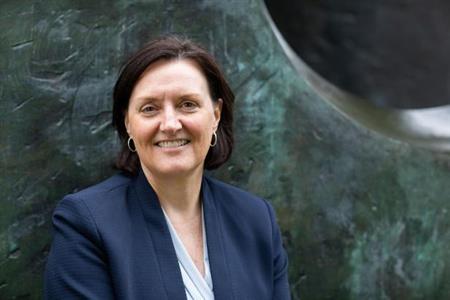
Message from ASBMR President Jennifer Westendorf, Ph.D. – January 28, 2025
Dear Colleagues,
As we advance into 2025, I am thrilled to share key initiatives supporting our strategic priority to Improve the Awareness, Diagnosis, and Treatment of Musculoskeletal Diseases. These efforts reflect ASBMR’s commitment to advancing patient care, research, and education.
We continue to work with key stakeholders to identify universal best practices for transitioning patients with rare bone diseases to care management. A highlight of this effort will be the Rare Bone Diseases Pre-Meeting, "From the Genome to the Lived Experience," scheduled for the day before the ASBMR 2025 Annual Meeting in Seattle, WA, USA. This full-day session will provide a comprehensive overview and spotlight the lived experiences of individuals with rare bone diseases. We thank Dr. Brendon Lee for organizing this event, as well as NIH and our corporate sponsors.
Two ASBMR Task Forces will present their important findings at the 2025 Annual Meeting. The Task Force on Discontinuation of Denosumab Therapy for Osteoporosis, having convened in Toronto to finalize charges and begin a literature review, will share its preliminary recommendations. Similarly, the Task Force on Atypical Subtrochanteric and Diaphyseal Femoral Fractures, which recently refined its scope, will also present updated recommendations to address critical gaps in treatment protocols. I want to thank all members of these task forces for their time and dedication to the projects, including their respective co-chairs Drs. Adi Cohen and Matthew Drake and Drs. Peter Ebeling and Angela Cheung.
In addition, ASBMR is spearheading a collaborative work group to improve osteoporosis care alignment. Currently, in North America, there are numerous osteoporosis guidelines. While many of the differences between guidelines are relatively trivial—the reality is that having so many independent guidelines can be confusing and overwhelming to health care providers—resulting in many individuals with osteoporosis not receiving appropriate management. ASBMR believes we can resolve this issue in collaboration with other leading organizations in osteoporosis care. This effort also exemplifies our commitment to collaboration and to improving the alignment of care standards across the region. I thank Drs. Ben Leder and Elaine Yu for their visionary leadership of this important endeavor.
ASBMR is committed to fostering coalitions with related organizations to advocate for increased awareness and access to care for bone health while addressing research gaps in women’s health. A dedicated working group, led by Drs. Tamara Alliston and Mary Bouxsein, is focusing on advancing education, advocacy, and equity in skeletal health, with a specific emphasis on women’s health research.
Finally, we celebrate the significant contributions of ASBMR members Drs. Nicola Napoli, Peter Ebeling, and Douglas Kiel. Their recent article in the New England Journal of Medicine emphasizes the importance of Fracture Liaison Services (FLS) in reducing secondary fractures and related mortality. Advocacy to overcome barriers, such as reimbursement, will be pivotal to the widespread implementation of these life-changing programs.
Thank you for your continued engagement and dedication to advancing musculoskeletal health worldwide. Together, we are making great strides in addressing the challenges and opportunities within our field. As a Society, we remain fully committed to these values and our strategic priorities.
Sincerely,
Jennifer J. Westendorf, Ph.D.
ASBMR President